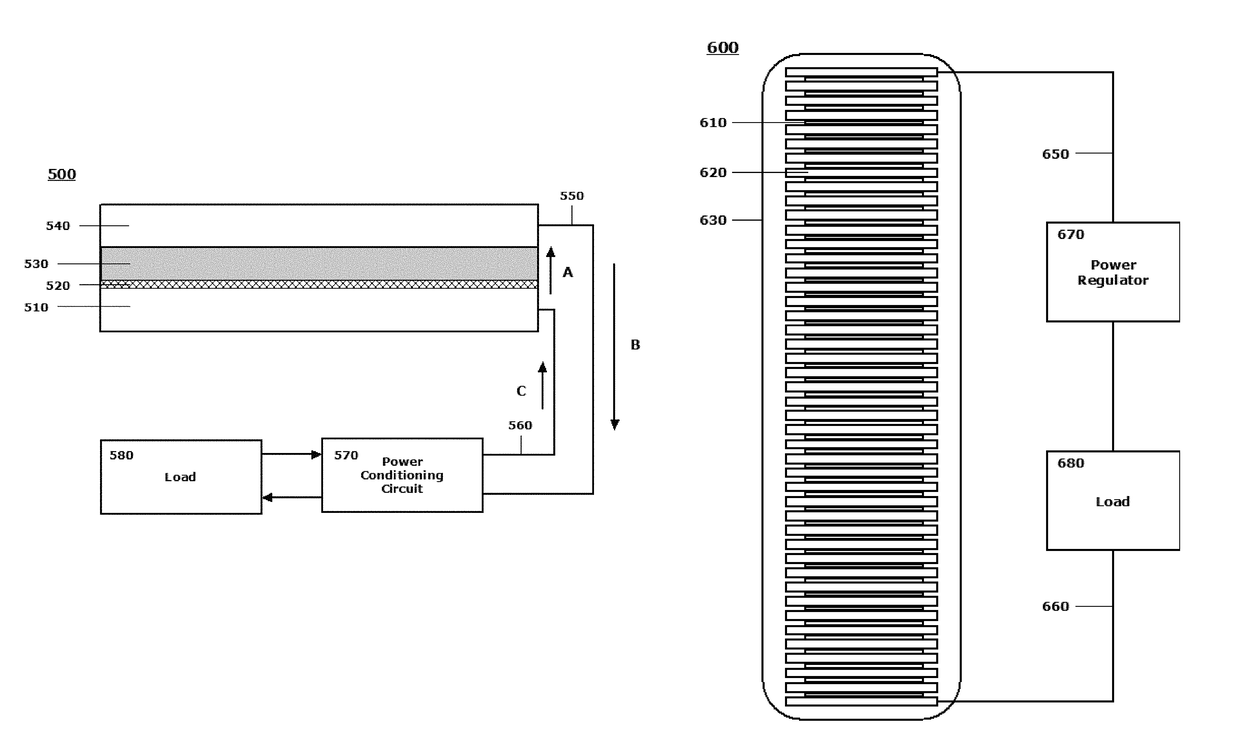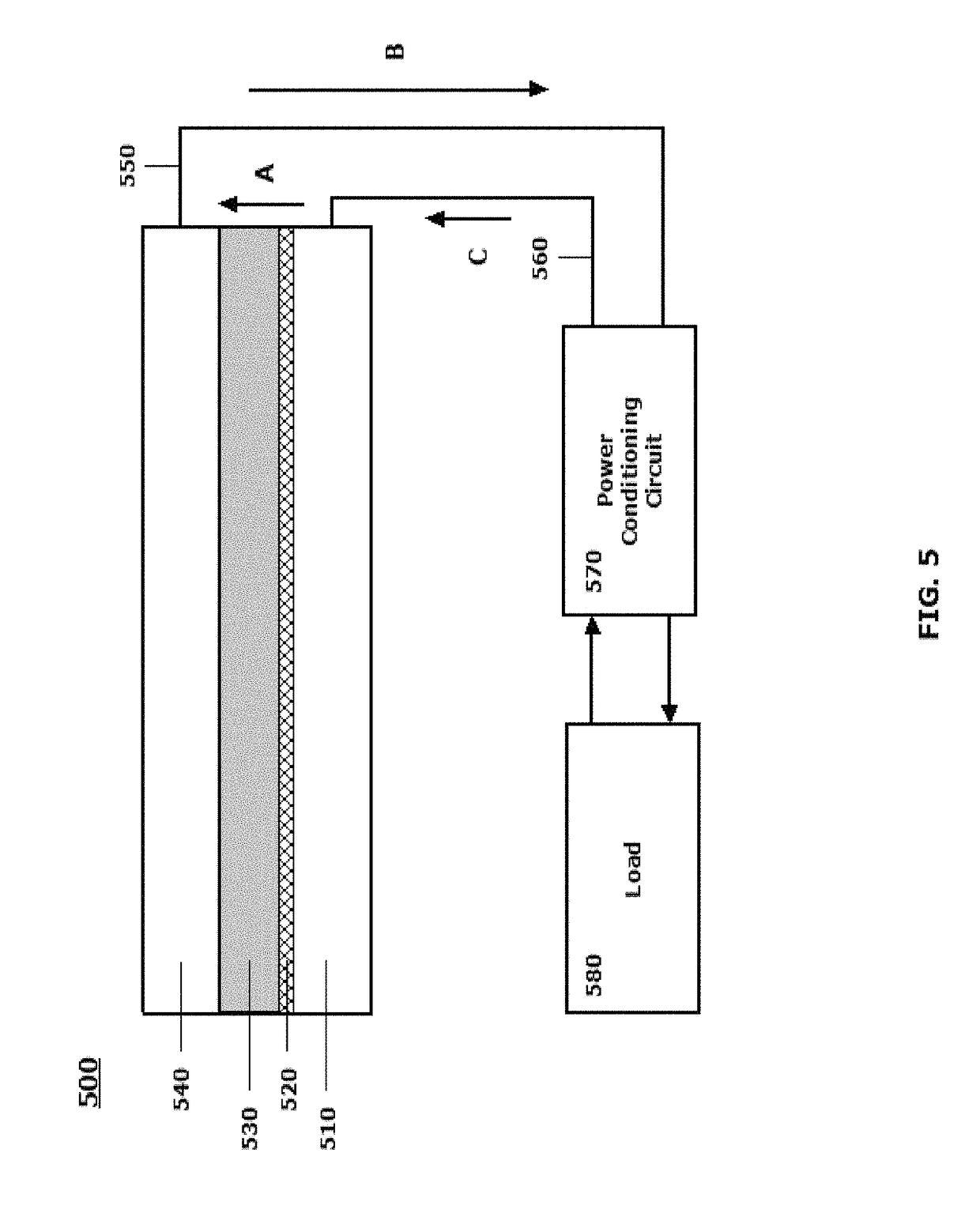Structurally embedded and inhospitable environment systems and devices having autonomous electrical power sources
a technology of electrical power source and environment system, which is applied in the direction of thermoelectric device manufacturing/treatment, semiconductor/solid-state device details, and treatment, etc., can solve the problems of ineffective data collection, inability to store and analyze data, and inability to deconflict communication of data
- Summary
- Abstract
- Description
- Claims
- Application Information
AI Technical Summary
Benefits of technology
Problems solved by technology
Method used
Image
Examples
Embodiment Construction
[0002]This disclosure relates to integrally-formed electrically-powered devices including unique, environmentally-friendly autonomous electrical power sources capable of being embedded in structures, and deployed in other environments, in which a sustainable, substantially permanent source of electrical energy is beneficial and in which accessibility to the electrically-powered devices, and the electrical power sources that drive those devices, may be restricted in a manner that may preclude servicing, recharge, replenishment or replacement.
2. Related Art
[0003]Recent technologic advances, particularly with the evolution of low-power solid state circuits and circuit components, have significantly increased the numbers and types of electronic systems, electronic devices, electronic system components, sensor systems / devices and wireless communicating components that require individual, scalable and often rechargeable sources of portable electrical power. Such systems and devices are ro...
PUM
 Login to View More
Login to View More Abstract
Description
Claims
Application Information
 Login to View More
Login to View More - R&D
- Intellectual Property
- Life Sciences
- Materials
- Tech Scout
- Unparalleled Data Quality
- Higher Quality Content
- 60% Fewer Hallucinations
Browse by: Latest US Patents, China's latest patents, Technical Efficacy Thesaurus, Application Domain, Technology Topic, Popular Technical Reports.
© 2025 PatSnap. All rights reserved.Legal|Privacy policy|Modern Slavery Act Transparency Statement|Sitemap|About US| Contact US: help@patsnap.com



